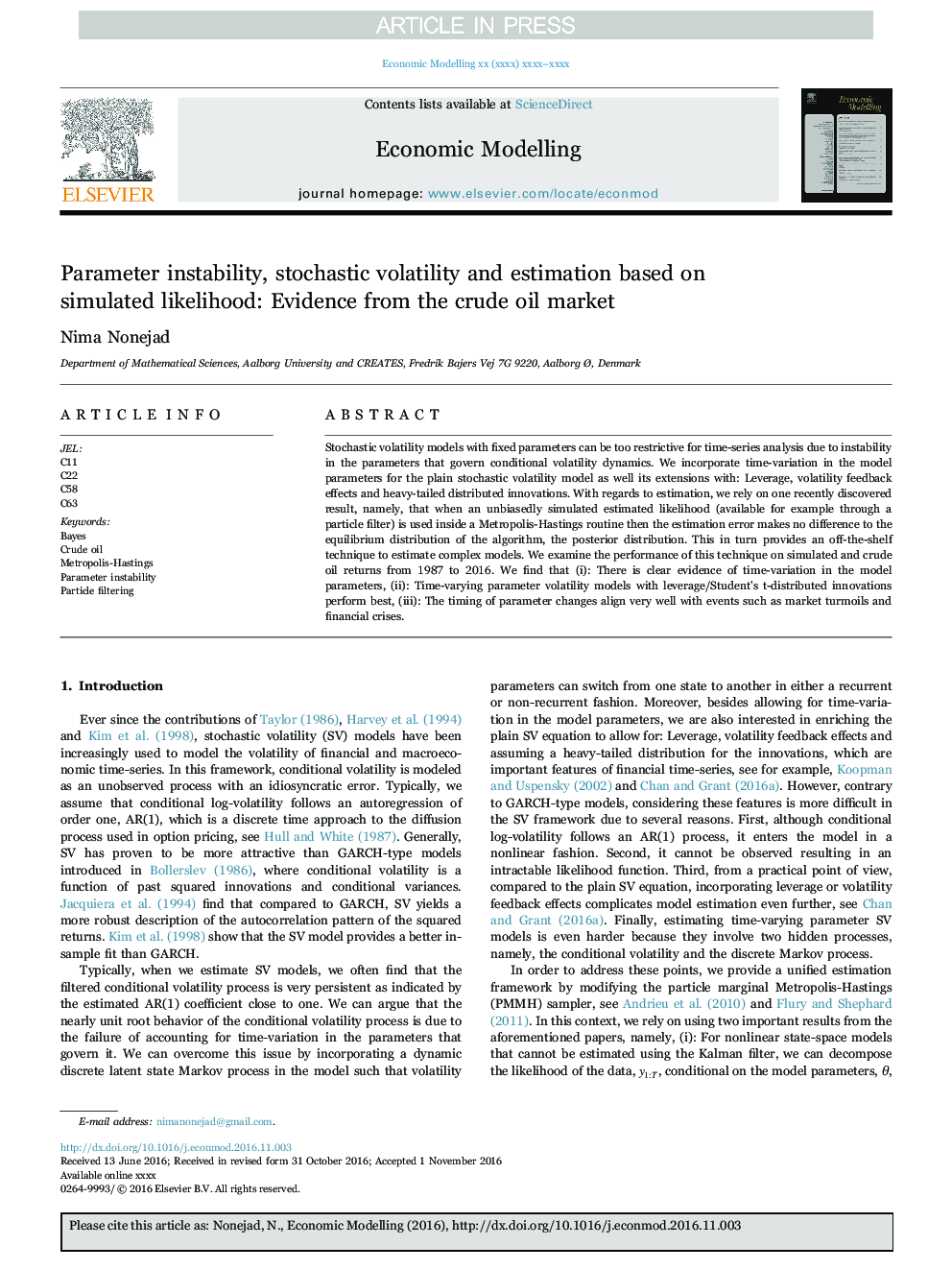| Article ID | Journal | Published Year | Pages | File Type |
|---|---|---|---|---|
| 5053114 | Economic Modelling | 2017 | 21 Pages |
Abstract
Stochastic volatility models with fixed parameters can be too restrictive for time-series analysis due to instability in the parameters that govern conditional volatility dynamics. We incorporate time-variation in the model parameters for the plain stochastic volatility model as well its extensions with: Leverage, volatility feedback effects and heavy-tailed distributed innovations. With regards to estimation, we rely on one recently discovered result, namely, that when an unbiasedly simulated estimated likelihood (available for example through a particle filter) is used inside a Metropolis-Hastings routine then the estimation error makes no difference to the equilibrium distribution of the algorithm, the posterior distribution. This in turn provides an off-the-shelf technique to estimate complex models. We examine the performance of this technique on simulated and crude oil returns from 1987 to 2016. We find that (i): There is clear evidence of time-variation in the model parameters, (ii): Time-varying parameter volatility models with leverage/Student's t-distributed innovations perform best, (iii): The timing of parameter changes align very well with events such as market turmoils and financial crises.
Related Topics
Social Sciences and Humanities
Economics, Econometrics and Finance
Economics and Econometrics
Authors
Nima Nonejad,
